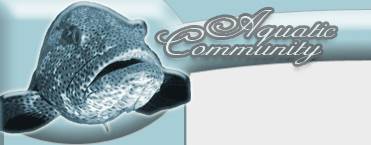Mange in dogs
Mange is a parasitic skin infestation in animals. The term mange entered the English language via French and is derived from the word mangier, which means ‘to eat’. This is an aptly chosen name, since the parasites do feed off the infected animal. Humans can also contract mange. Two types of mange are found in dogs: Sarcoptic mange and Demodectic mange.
Sarcoptic mange in dogs
Sarcoptic mange is also known as canine scabies and is caused by a burrowing mite named Sarcoptes scabiei canis. The disease is highly contagious and can spread to other pets and humans.
Sarcoptic mange symptoms in dogs
Intense itching
Crusting
Secondary skin infections
Hair loss (which usually starts at elbows and ears)
Skin damage as a result of the dog scratching and biting itself
Sarcoptic mange treatment for dogs
A rich array of parasiticidal treatments are capable of killing Sarcoptic mange in dogs. You can for instance apply a Sulfurated lime rinse once a week or every second week until all mites are dead. Selamectin is highly effective against Sarcoptic mange in dogs, but you will need a prescription from a vet in most countries. Selamectin is given to the dog by drops placed directly on the skin. A third method for treating Sarcoptic mange in dogs is to administer Ivermectin orally once a week for 2-4 weeks. Collies and other herding dogs are often very sensitive to Ivermectin.
Dogs infected with Sarcoptic mange must be kept away from other animals to prevent the disease from spreading. The environment around the dog, including bedding, must be stringently cleaned. Dogs that have had contact with your dog should be inspected by a veterinarian.
Demodectic mange in dogs
Demodetic mange in dogs – also known as Red Mange – is caused by a species of mite named Demodex canis. Demodex canis is naturally occurring in the hair follicles of most dogs without causing any problems at all. When a dog is weakened by something, such as stress, poor nutrition, or problems with the immune system, the Demodex canis population can however grow dramatically in size and start causing skin irritation. This condition is known as Demodetic mange.
Demodectic mange symptoms in dogs
Among the first symptoms of Demodectic mange in dogs is usually hair loss on a small patch of skin. The face is usually affected first, especially the area around the eyes and at the corners of the mouth. The forelimbs of a dog are also prone of Demodectic mange. Mild cases of Demodectic mange will normally not lead to intense itching, but you may notice redness, scaling, and pustules. When Demodectic mange is limited to a low number of small patches it will often vanish without treatment, but treatment is still recommended in most cases to prevent the mild mange from developing into more severe mange. Severe cases of Demodectic mange in dogs can lead to widespread inflammation and deep secondary skin infections. Patches of hair can fall off all over the body, and the disease can also cause severe pain, crusting, and enlarged lymph nodes. Demodectic mange can even be lethal for dogs.
Demodectic mange treatment for dogs
As long as the Demodectic mange attack in your dog is small and limited to a few patches, you can use a medicated shampoo to get rid of the mites.
If secondary infections develop as a result of the Demodectic mange, you dog will need a combination of medicated shampoos, parasiticidal agents (agents capable of killing parasites) and antibiotics. The vet can for instnace prescribe an anti-parasitical rinse containing Amitraz, since this drug has proven effective against severe cases of Demodectic mange in dogs. Amitraz rinse should be applied once a week or every second week until the vet can find no mites in skin scrapes from your dog. This mange treatment will normally take several weeks.
Another way of treating Demodectic mange in dogs is to use Avermectins. Avermectins are a group potent anthelmintic and insecticidal compounds. They are fermentation producs from a special strain of the fungi Streptomyces avermitilis and are toxic for all mites. Two examples of efficient avermectin drugs are Doramectin and Milbemycin. Ivermectin is related to the avermectin molecule and is highly efficient against Demodectic mange in dogs, but herding breeds such as collies can have problems tolerating Ivermectin.
Parasites in dogs: (click for more info)
Cheyletiellosis in dogs
Chiggers in dogs
Ear Mites in dogs
Fleas in dogs
Heartworm disease in dogs
Hookworms in dogs
Mange in dogs
Roundworm in dogs
Tapeworms in dogs
Ticks in dogs
Trichinosis in dogs
